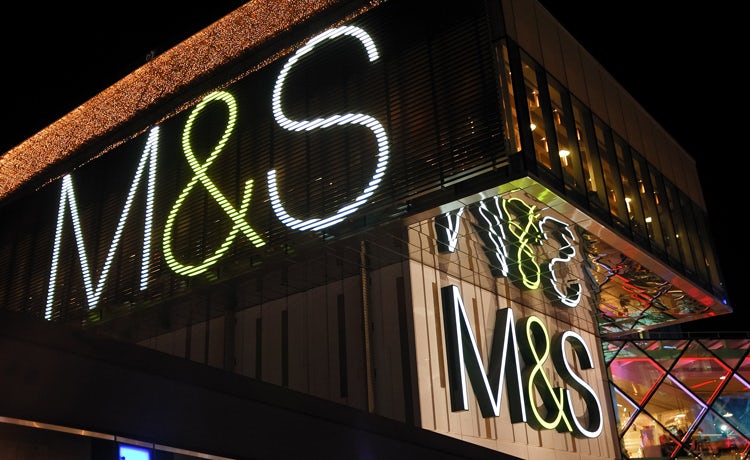M&S strategy to sell rival brands marks the end of an era
M&S’s move to start selling clothing from competitors including Hobbs, Joules and White Stuff is designed to pull in more customers and “turbocharge” online sales.
 This isn’t a radical strategic shift, it’s a Marks & Spencer radical strategic shift. While most retailers have seen selling products made externally as a bread and butter operation, for M&S the idea of selling clothes developed by another company represents a fundamental change in thinking.
This isn’t a radical strategic shift, it’s a Marks & Spencer radical strategic shift. While most retailers have seen selling products made externally as a bread and butter operation, for M&S the idea of selling clothes developed by another company represents a fundamental change in thinking.
Built on the promise of quality in its still-remembered St Michael brand, and the benchmark of underwear standards for generations of shoppers, M&S has traditionally resisted any temptation to water down its fashion offer with products from outside the company. The retailer’s USP was exclusive ranges, unsullied by the wider world.
But that was then. Now M&S clothing is following the route taken by M&S Food in 2009 by admitting ranges from other brands, in a move it hopes will “turbocharge” online sales.
M&S will sell products from a host of other labels, with Hobbs, Jack & Jones, Joules, Phase Eight, Seasalt Cornwall, Selected Homme, Selected Femme, Sloggi, Sosandar, Triumph, White Stuff and Y.A.S ranges to be sold via the M&S website.
There will also be opportunities to buy these brands in-store in future M&S has confirmed.
Starting this month, the external brands will be introduced alongside a slimmed-down core of M&S labels – just Autograph, Goodmove and Per Una remain of these – though new ranges from the Finery and Ghost will launch soon.
The move to bring in brands follows a trial that saw curated offers from Early Learning Centre and Nobody’s Child stocked; meanwhile a selection of branded children’s clothing ranges launched last week, from Brand Machine Group.
The entire process is part of the Never the Same Again programme, which M&S launched last year to drive a transformation plan in response to the impact of Covid-19 on consumer behaviour. M&S customers can use their Sparks loyalty accounts and get free next-day click-and-collect services to buy the new ranges.
“We’re pleased to be introducing guest brands throughout the spring onto M&S.com as part of our plans to turbocharge online growth,” says M&S director of brands Neil Harrison. “The exciting mix will offer our 22 million customers product we already know they love and introduce them to some new brands.”
Will the strategy work?
But M&S may be swimming against the tide in finally accepting external ranges to its website and stores.
“It is harder and harder to make a decent return by selling somebody else’s product,” says retail analyst Richard Hyman. “This option is low cost. It is a lot cheaper than putting money behind your own product. But it’s not a solution at all. [M&S] do have to get their own product right.
Products from Joules, Hobbs and Phase Eight are all available in a lot of other places, adds Hyman, and fans of those brands will find a fuller selection in their standalone stores.
Meanwhile, the brands will be wary of simply spreading existing sales over more channels, he says. And, as the troubles faced by the department store sector have shown, simply being a stockist of lots of products does not help a retailer stand out in the days of Amazon.
Hyman suggests that a successful future M&S clothing business requires substantial investment in M&S’s own brand – investment that has been lacking for years as the retailer sought to reduce prices in the face of stiff price competition. “It’s a vicious circle,” he says.
M&S recently appointed former Tesco non-food brand director Anna Braithwaite as marketing director for clothing and home. She is set to join the business this summer and is being brought in to help change perceptions of M&S clothing and home among consumers, and ensure products are more relevant, more often.
M&S taps up Tesco marketer to lead clothing and home
M&S has ploughed its own furrow for a long time, and became an exemplar of the globally successful UK company by doing so. Founded in 1884, M&S became, in 1998, the first UK retailer to make pre-tax profits of more than £1bn.
But the performance of its clothing ranges has been faltering for years. Last year the company reported a loss for the first time. It has closed a number of stores and is planning to drastically reduce the size of its flagship store on London’s Oxford Street.
Observers might note that this is an odd time for M&S to finally start behaving like other retailers.
“M&S is not what it was. It was a ‘walk on water’ company,” says Hyman. “It isn’t any more.”






